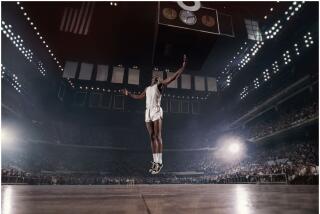Phillips Collection exhibition links the box camera and painters
George Eastman introduced the first Kodak camera in 1888. It was a small wooden box covered in Morocco leather with a roll of dry film inside. You no longer had to be a professional carrying a tripod, heavy plates, a darkening cape and liquid developer to take a photograph. Any amateur could hold the box waist-high, aim at a subject like the family and press the button that released the shutter that covered the lens. The box — later just the roll — could be sent back to the company to develop the film. Kodak advertisements promised, “You press the button, we do the rest.”
The Kodak, continually improved by Eastman’s American company, soon became a big seller. Among the enthusiasts were young painters in Europe. They embraced the cameras like other amateurs who sought mementos — taking pictures of their children, their vacation sites, their city’s monuments. But since they were artists concerned about light and composition and atmosphere, their mementos showed a quality far beyond amateur stuff. These snapshots, moreover, often influenced their professional art.
The influence of the box camera on artists at the turn of the 20th century is examined in an exhibition at the Phillips Collection called “Snapshot: Painters and Photography, Bonnard to Vuillard.” The show, which originated in the Van Gogh Museum in Amsterdam, closes at the Phillips in Washington on May 6 and goes on to the Indianapolis Museum of Art in June. The exhibition includes 70 paintings, prints and drawings and more than 200 photographs.
The idea for the show arose more than 20 years ago when Elizabeth W. Easton, the curator of the exhibition, came upon a surprising trove of photographs, never exhibited before, in the archives of the French painter Edouard Vuillard. Over the years, Easton, now director of the Center for Curatorial Leadership in New York, searched for similar stocks of little-known photographs taken by artists with the new hand-held cameras.
She finally settled on seven artists. They included Vuillard and three of his associates in a group of Parisian painters known as the Nabis (from the Hebrew word for “prophets”): Pierre Bonnard, Maurice Denis and Félix Vallotton. Easton added three lesser-known artists: the French printmaker Henri Rivière, the Dutch painter George Hendrik Breitner and the Belgian painter Henri Evenepoel.
All were young, between ages 16 to 31, when Eastman introduced his Kodak camera. None exhibited their photos during their lifetime. At the most public, Denis’ wife placed enlargements in albums that she showed to friends and relatives. All these painters, as Easton puts it, “took pretty fantastic photos.” Some, like Rivière’s modern geometric compositions of workers on the Eiffel Tower, are stunning.
The photos occasionally served as preliminary studies for paintings and prints. Photos had an advantage over drawings because they caught a scene in an instantaneous moment of time. After taking nude photos of his model and future wife Marthe, Bonnard used them as studies for lithographs that illustrated two books in 1900 and 1902.
The artists tried not to follow their photos exactly, for any attempt to reproduce a photo in paint was looked on in artistic circles as a kind of cheating. Breitner posed a 16-year-old girl for a photo much the same way he composed his oil painting “Girl in Red Kimono, Geesje Kwak” (1893-95). But the teenager looks different, far more mature and worldly in the painting.
More often the photo, rather than serving as a study for a painting, simply offered the artist an idea or a figure or vantage point for use in a larger work of art. Denis, for example, liked to photograph his wife, Marthe, in profile with a child and then paint her the same way. That motif can be seen in an 1890 photo of her offering grapes to her daughter Bernadette and in the 1896 painting “Noëlle and Her Mother.” The mother is cropped in the painting much the way she is cropped in several Denis photographs.
Sometimes the photos create an atmosphere that also infuses the paintings. Vuillard is noted for paintings of relatives and friends in crowded interiors somehow made darker by the relentless patterns of wallpaper and of sofa and chair coverings. In one well-known painting, “Interior, Mother and Sister of the Artist” (1893), the mood is so oppressive that his sister seems on the verge of vanishing into the wallpaper. Vuillard made many interior photos, but most were shot after the paintings were finished. The photos did not create his favorite atmosphere but surely reinforced it.
The influence of painting on photography, in fact, is one theme of the show. In 1892, for example, Denis painted “On the Beach (Two Girls Against the Light).” He returned 17 years later to take a photo against the light of two other girls wading in water by the beach. Although they are swinging a younger child this time, the swerve of their bodies and their carefree manner make them look as if they came straight out of the painting.
Hand-held cameras with rolls of film dominated photography for a century. But a few days after the exhibition opened in Washington last month, theEastmanKodak Co., now under bankruptcy protection, announced it was going out of the camera business, a victim of the age of digital photography.
More to Read
The biggest entertainment stories
Get our big stories about Hollywood, film, television, music, arts, culture and more right in your inbox as soon as they publish.
You may occasionally receive promotional content from the Los Angeles Times.






